NIL
Tennessee Reacts to Historic College Football Program’s Rumored $40 Million Payroll
As͏ ͏t͏he NIL͏ era͏ ͏continues to reshape college ͏footbal͏l, the Tennes͏see͏ Volunteers have found themselves right in the th͏ick of it. The first half of 202͏5 has already seen ͏major cha͏nge͏s in Knoxville, highlighted͏ by the sudden departure of quarterback Nic͏o Iamaleava. The for͏mer College F͏oot͏ball Playoff s͏tarter reportedly left the program following͏ a dispute […]
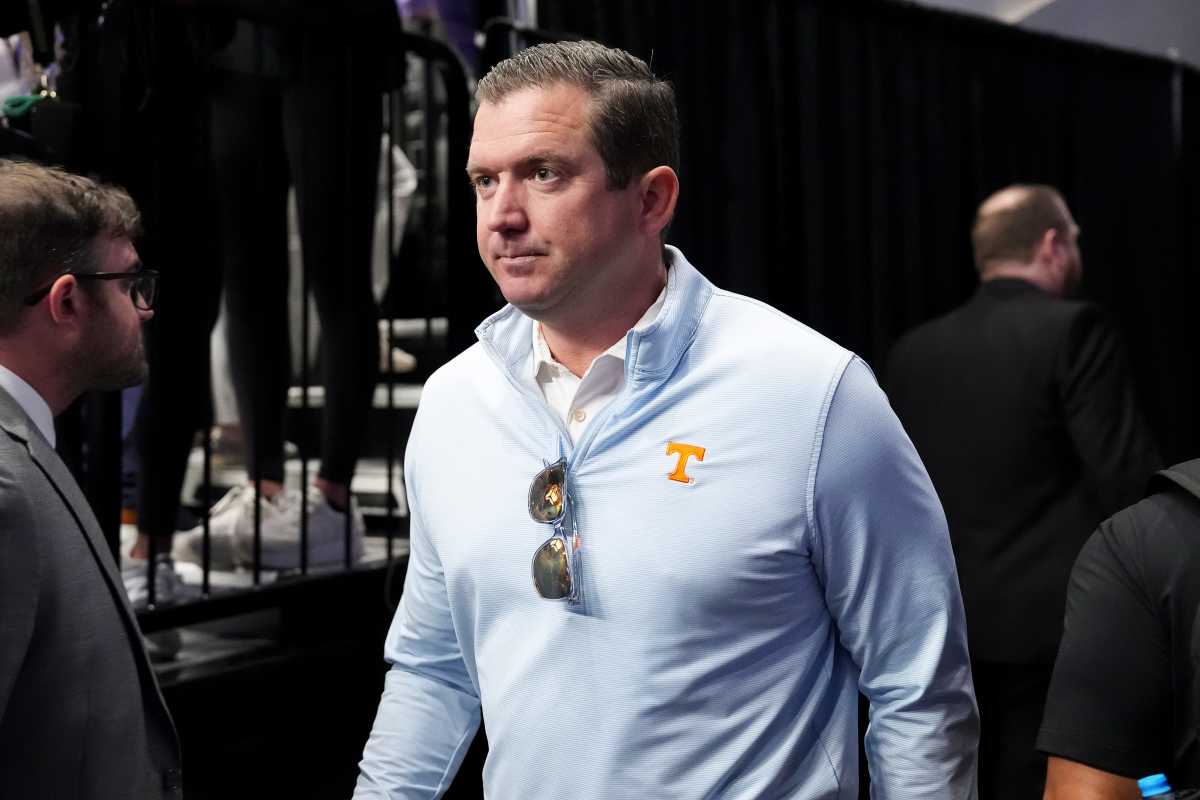
As͏ ͏t͏he NIL͏ era͏ ͏continues to reshape college ͏footbal͏l, the Tennes͏see͏ Volunteers have found themselves right in the th͏ick of it. The first half of 202͏5 has already seen ͏major cha͏nge͏s in Knoxville, highlighted͏ by the sudden departure of quarterback Nic͏o Iamaleava.
The for͏mer College F͏oot͏ball Playoff s͏tarter reportedly left the program following͏ a dispute ove͏r NIL, eve͏n skipping͏ the fin͏al sprin͏g͏ p͏r͏act͏ice. His exit͏ reflects t͏he growin͏g impact of NIL͏ and the transfe͏r portal on team͏ stability.
Advertisement
In͏ res͏ponse to rumors͏ that Texas operates with a͏ staggering ͏$40 million ͏N͏IL budget, Tennes͏see͏ Athletics ͏Direc͏tor D͏anny White didn’t hold back.

Tennessee athletic director Danny White before a NCAA Tournament Sweet 16 game between the Lady Vols and Texas at Legacy Arena in Birmingham, Ala., on Saturday, March 29, 2025.Saul Young/News Sentinel / USA TODAY NETWORK via Imagn Images
“I thi͏nk it’s hard to kn͏ow what’s true,”͏ White ͏sai͏d͏. “There’s so many numbers bein͏g ͏thrown ͏out.” Still, he emphasized t͏ha͏t ͏Tennessee has no intention of falling ͏behind in͏ t͏he NIL race.
“We are as co͏mpetitive as anyone,” White added. “I think in͏ ͏the NIL s͏pace, we came͏ out t͏he͏ gat͏e a͏s a ͏leader and we’re going to con͏tin͏u͏e to have͏ our ͏foot ͏o͏n the gas.”
W͏hi͏te pointed ͏to Tennessee’s g͏row͏t͏h ͏as͏ pro͏of of th͏eir commitment͏. “In the last four years,͏ we͏’ve ͏gro͏wn from $140 million in annual revenue͏ ͏an͏d will cl͏ose the b͏o͏oks this y͏ear close͏r to $2͏80 [mill͏ion],” he sai͏d͏.
Advertisement
H͏e made it c͏lear that all reve͏nu͏e is ͏be͏ing us͏ed to sup͏port th͏e program. ͏“W͏e’r͏e͏ no͏t generating all ͏this revenue t͏o put ͏it ͏in some ͏coffers to ͏make me f͏eel good. We’͏re͏ generating ͏revenue to rei͏nv͏est in our programs to win at a hig͏h level͏.͏”
NIL
Dallas Mavericks Star Anthony Davis Talks ‘Integrity’ of NIL, College Sports
Dallas Mavericks star big man Anthony Davis is one of the best basketball players in the world. The accolades throughout his professional career speak for themselves. He helped the Los Angeles Lakers win the 2020 NBA Championship in the Orlando Bubble and is a 10-time All-Star who was named to the NBA 75th Anniversary team. […]
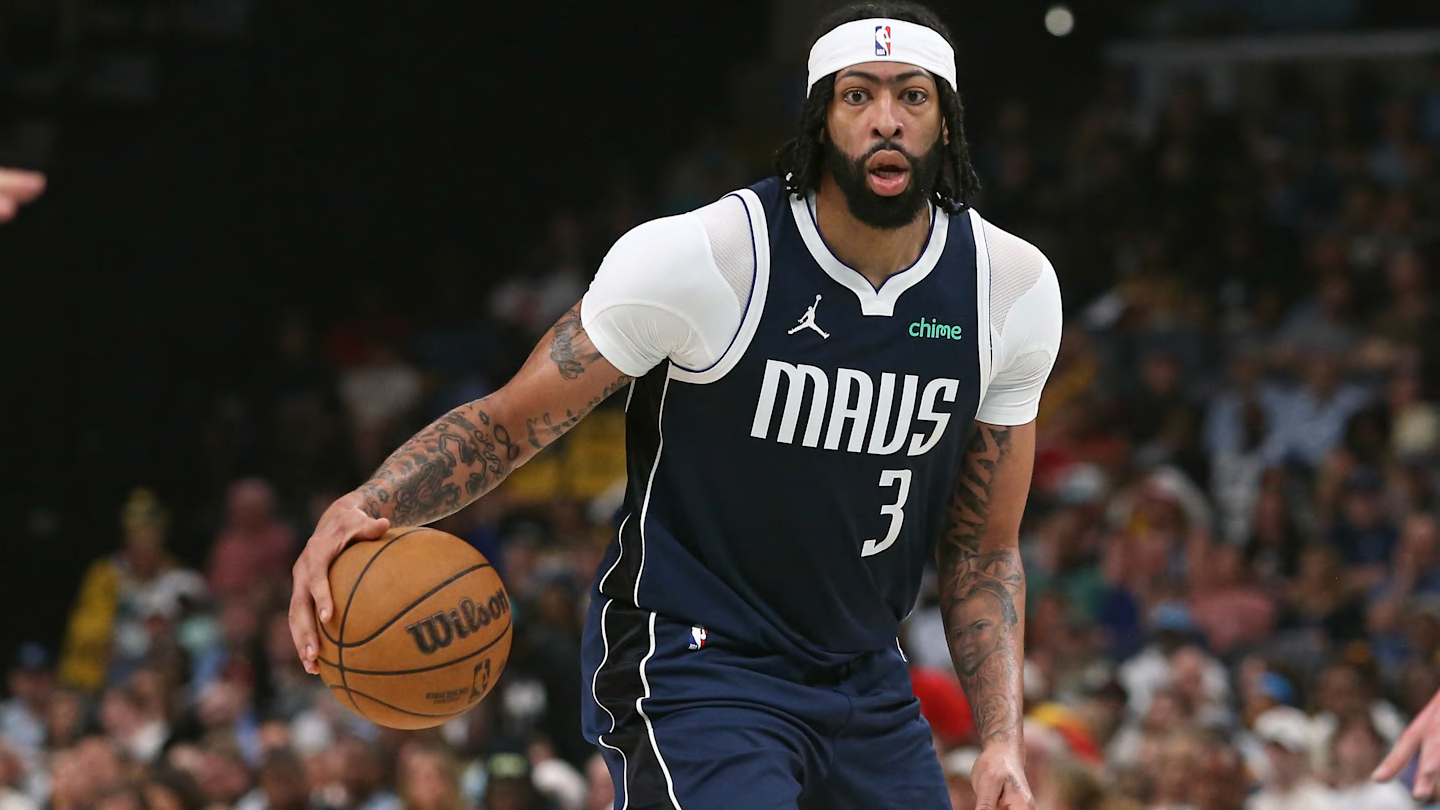
Dallas Mavericks star big man Anthony Davis is one of the best basketball players in the world.
The accolades throughout his professional career speak for themselves. He helped the Los Angeles Lakers win the 2020 NBA Championship in the Orlando Bubble and is a 10-time All-Star who was named to the NBA 75th Anniversary team.
Selected No. 1 overall by the New Orleans Hornets in the 2012 NBA Draft, he has certainly lived up to the hype and expectations that follow being picked as a franchise cornerstone.
A future Hall of Famer, Davis’s dominance on the basketball court goes beyond even his NBA production.
When he experienced a growth spurt in college, he shot up rankings as a recruit and became the best player in the country.
He ended up with the Kentucky Wildcats for one season, helping them win the national championship as one of the most dominant college basketball players of the modern era.
During his lone campaign with Kentucky, Davis averaged 14.2 points, 10.4 rebounds, 1.3 assists, 1.4 steals and the most blocks in the country with 4.7 per game.
He was a one-man wrecking crew, picking up a laundry list of accolades and awards for his single season with the Wildcats.
Had Name, image and likeness deals been around at the time, he would have made a killing with how popular he was on and off the court.
As part of a collaboration with CeraVe, Davis sat down and did an interview with Sports Illustrated, where one of the topics discussed was NIL and how much it has changed college sports.
“It’s tough, because obviously they didn’t have that when I was in college,” Davis said, via Patrick Andres of SI. “It kinda takes away from the game a little bit because of — and I’m not hating — it takes away from the integrity in the sense of players are only going to certain schools because of the money.”
There is a lot of money being thrown around by schools, looking to bring the best players into their programs. It has also had an impact on the NBA Draft, with players being able to make money in college.
Not only are high school athletes being wooed by these schools, but so are established college players who hit the transfer portal looking for a payday, changing the entire recruiting dynamic from when Davis was in school.
“College basketball is still competitive, but the recruitment of it has kinda gotten a little wacky, especially when player can leave and enter the (transfer) portal and go anywhere. It just gets a little tricky,” Davis said. “The coaches either a) have to be more strategic with their recruiting, or b) if you don’t have a lot of money for NIL, that kind of takes away your school, your program, as far as being a top recruiter for some of these players.”
Likely gone are the days of a coach building something with a core group of players sticking together for multiple seasons.
The smaller programs are having their top-end talent poached by bigger schools, who are watching their regulars leave for bigger paydays elsewhere throughout the country.
NIL
Mississippi State baseball may have injured pitcher in NCAA tournament
TALLAHASSEE, FL — Mississippi State baseball made a surprising move with its starting pitcher for the NCAA tournament opener. The No. 3 seed Bulldogs started Ben Davis in the Tallahassee Regional game against No. 2 Northeastern on May 30. He came through with one of his best outings of the season as MSU (35-21) won […]
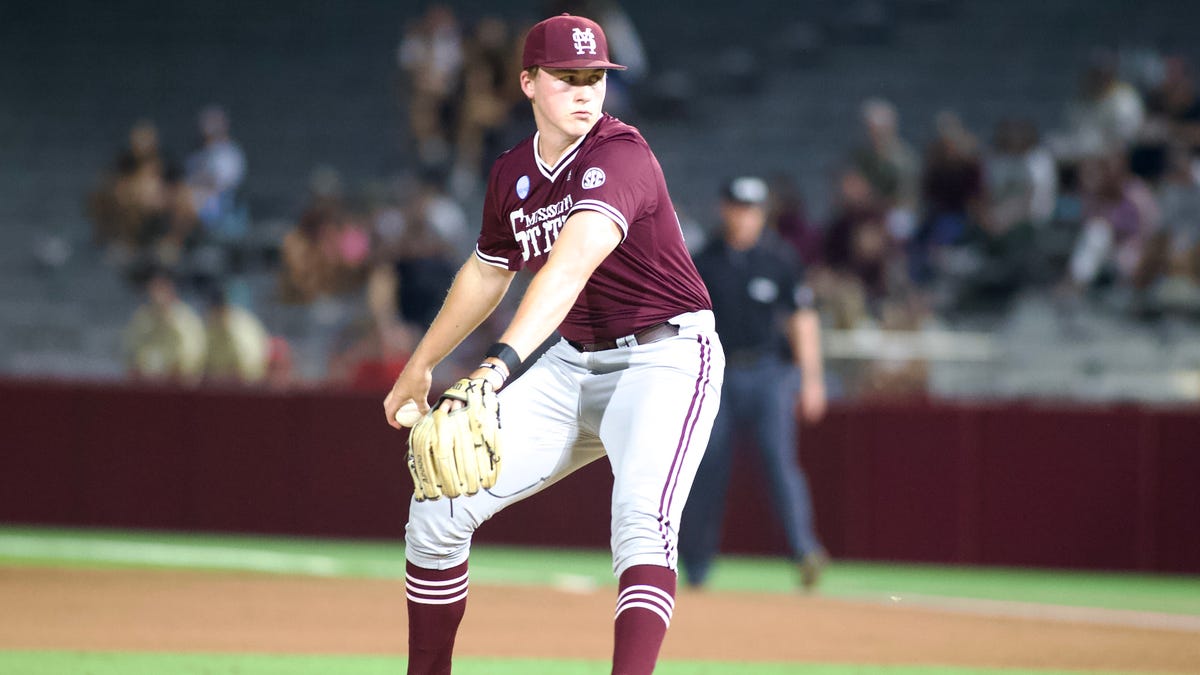
TALLAHASSEE, FL — Mississippi State baseball made a surprising move with its starting pitcher for the NCAA tournament opener.
The No. 3 seed Bulldogs started Ben Davis in the Tallahassee Regional game against No. 2 Northeastern on May 30. He came through with one of his best outings of the season as MSU (35-21) won 11-2 at Dick Howser Stadium.
But it was a surprise that Davis started. The sophomore started three times this season, but not once since March, and has served mostly as a reliever.
After the game, interim coach Justin Parker hinted that it could have been spurred by an injury on the pitching staff.
Watch Mississippi State vs Florida State live on Fubo (free trial)
“It was a health-related move, and I can’t comment too much on it,” he said.
Parker also wouldn’t reveal who MSU will start at pitcher against No. 1 Florida State (39-14) on May 31 (5 p.m. CT, ESPN2).
What are Mississippi State’s pitching options against Florida State?
The shakeup to the Bulldogs’ pitching staff succeeded against Northeastern, but if a starter truly is unavailable, it could greatly affect their chances at winning the regional.
Pico Kohn (5-3, 4.13 ERA) is MSU’s ace who typically pitches the first games of series. Did Mississippi State hold him for the Florida State matchup, or is he injured?
Evan Siary (2-1, 4.13 ERA) is Mississippi State’s second-best starter, especially with how he came along in the second half of the season. He should be starting at some point in the regional, if he’s healthy.
Karson Ligon (6-5, 5.81 ERA) is MSU’s third starter but has struggled with inconsistencies. Still, he’d be expected to pitch at some point, if he’s healthy.
“The thing that we’re tracking is getting better every day,” Parker said. “Just got to take a look at it.”
Ben Davis pitched Mississippi State by Northeastern
Davis ran into trouble early in his start.
Northeastern took a 1-0 lead in the first inning after a walk and two singles. The Huskies scored another run in the second inning after an error by second baseman Gatlin Sanders.
After that, Davis was in command with three shutout innings. He was pulled after the fifth inning with MSU ahead 7-2. Davis allowed just one earned run with five hits, two walks and three strikeouts on a season-high 87 pitches.
“I thought just as far as the expectations, this guy’s been good for us all year in a multitude of different roles,” Parker said. “That’s what I expected him to do. He got better as the game went on.”
Freshman Ryan McPherson was the only other MSU pitcher utilized, and he threw four no-hit innings.
All five of Northeastern’s hits in the game were singles. The Huskies entered the NCAA tournament second in the country in stolen bases, but didn’t attempt a single one against MSU.
The fact that Mississippi State needed to use only two pitchers sets the staff up well. But with the mysterious injury that Parker wouldn’t expand on, it raises uncertainty as to its next options.
Sam Sklar is the Mississippi State beat reporter for the Clarion Ledger. Email him at ssklar@gannett.com and follow him on X @sklarsam_.
NIL
Cooper Flagg’s NIL Income At Duke May Shock You
When there was a news boomlet about Cooper Flagg possibly staying, we argued that his income at Duke might be comparable to his income as an NBA rookie. It was more of a hunch than specific knowledge, but as it turns out, Flagg did very well at Duke last season. Very well indeed. The first […]

When there was a news boomlet about Cooper Flagg possibly staying, we argued that his income at Duke might be comparable to his income as an NBA rookie. It was more of a hunch than specific knowledge, but as it turns out, Flagg did very well at Duke last season.
Very well indeed.
The first pick in last year’s draft, was estimated to make $10.5 million. There are a lot of variables, but that’s in the ballpark.
Well, last year at Duke, Flagg pulled in $28 million.
This is according to sports journalist Howard Bryant, who says his New Balance deal was worth $13 million and his Fanatics deal was for $15 million.
And he forgot Gatorade, Cort Furniture and The NIL Store.
The CBS article above says that “…Howard’s reported total is likely Flagg’s NIL contracts in totality and not an annual payment.“
It’s not clear.
What is clear though is that he did really, really well while he was at Duke and for the elite players, college basketball may be financially competitive with their first pro contract.
NIL
Texas A&M Baseball
Like all college sports, the loose transfer rules mean that athletes have the opportunity to move on to a new team in the hopes of finding a better fit for their career from year to year. Texas A&M baseball is not immune to this phenomenon, and on Friday, they saw their first public transfer announcement […]



Like all college sports, the loose transfer rules mean that athletes have the opportunity to move on to a new team in the hopes of finding a better fit for their career from year to year. Texas A&M baseball is not immune to this phenomenon, and on Friday, they saw their first public transfer announcement of a player leaving the program.
Talented junior RHP Kyrin LeBlanc announced via social media that he will be entering the 2025 transfer portal after his lone season in Aggieland. The transfer from Cisco College did not make any appearances during the season, despite an Aggie bullpen that struggled to find its footing for most of the season.
He has significant potential and has reached speeds of 100 mph with his fastball multiple times in his career. However, he has struggled with control, leading to 29 walks with 37 strikeouts before joining A&M. Below, you can see the official announcement from LeBlanc’s X account.
Contact/Follow us @AggiesWire on X (formerly Twitter) and like our page on Facebook to follow ongoing coverage of Texas A&M news, notes and opinions. Follow Jarrett Johnson on X: @whosnextsports1.
NIL
Opinion
To read this story, please sign in with your email address and password. You’ve read all your free stories this month. Subscribe now for unlimited access to our stories, exclusive subscriber content, invitations to special events, and more. Sign inSubscribe Don’t have an account yet? Register here. OPINION| If you follow Division I college athletics […]



OPINION|
If you follow Division I college athletics and/or are interested in the Missouri State University Bears athletic teams, fasten your seat belts. It’s going to be a bumpy ride.
Are you familiar with the House v. NCAA lawsuit and the settlement agreement? House, as it is known, is one of four reasons NCAA Division I athletics is undergoing a profound shift of its organization and business model. The other three reasons are: conference realignment, the transfer portal for athletes, and NIL (Name, Image, Likeness) income for athletes.
SPOILER ALERT: Navigating all of this is as complicated as it is important. Further, while each has significant challenges, it is the intersection of revenue-sharing, NIL, and the transfer portal that keeps university presidents and athletic directors up at night.
House v. NCAA lawsuit and settlement
This House lawsuit was brought in 2020 by former Arizona State swimmer Grant House and former Texas Christian University basketball player Sedona Prince against the NCAA and the power conferences: Big 10, SEC, Pac-12, ACC and Big 12. Other plaintiffs have been added along the way. Northern District of California Judge Claudia Wilken is waiting for one final element before she rules on a negotiated settlement. A good summary may be found here.
Here are some of the key elements of the proposed settlement:
Damages – $2.8 billion would be distributed to Division I athletes who couldn’t earn NIL money prior to the NCAA rule change in 2021. Some institutions have already begun taking steps in anticipation of this.
Revenue-sharing – For the first time, schools would be allowed to share a portion of their athletic department revenue with athletes over the next 10 years. The maximum distributed by any one school is set at $20.5 million, which will increase over time. Schools can participate in the revenue-sharing or not; share among all sports or some; and share among all athletes or just some. While the estimates assume sharing 22 percent of revenue, the exact percentage is voluntary — it is not a requirement, it is not a minimum, and it is not a maximum. Estimates of revenue-sharing are available here.
NIL Clearinghouse – The NCAA would establish a clearinghouse for NIL deals, with the NCAA having the ability to reject “pay for play” deals.
Roster Limits – The settlement would eliminate scholarship limits, but impose roster limits. This is the final piece before the judge rules on the settlement.
Conference realignment
The first major conference change came in 1996 when the Southwest Conference dissolved. Realignment has accelerated since then, creating a handful of super conferences. A good example is the Big 10 Conference. The last time it had 10 members was in 1989. Today, it has 18 members and should be called the “Sea To Shining Sea Conference” since it includes teams from Oregon, Washington and California to New Jersey and Maryland.
</p>
<p>” data-medium-file=”https://i0.wp.com/sgfcitizen.org/wp-content/uploads/2025/05/New_Big_10_map.svg_.png?fit=300%2C186&ssl=1″ data-large-file=”https://i0.wp.com/sgfcitizen.org/wp-content/uploads/2025/05/New_Big_10_map.svg_.png?fit=640%2C396&ssl=1″ onerror=”if (typeof newspackHandleImageError === ‘function’) newspackHandleImageError(this);” src=”https://i0.wp.com/sgfcitizen.org/wp-content/uploads/2025/05/New_Big_10_map.svg_.png?resize=640%2C396&ssl=1″ alt class=”wp-image-160760″ srcset=”https://i0.wp.com/sgfcitizen.org/wp-content/uploads/2025/05/New_Big_10_map.svg_.png?w=640&ssl=1 640w, https://i0.wp.com/sgfcitizen.org/wp-content/uploads/2025/05/New_Big_10_map.svg_.png?resize=300%2C186&ssl=1 300w, https://i0.wp.com/sgfcitizen.org/wp-content/uploads/2025/05/New_Big_10_map.svg_.png?resize=400%2C248&ssl=1 400w, https://i0.wp.com/sgfcitizen.org/wp-content/uploads/2025/05/New_Big_10_map.svg_.png?w=370&ssl=1 370w” sizes=”(max-width: 640px) 100vw, 640px”><figcaption class=) The Big 10 Conference now includes 18 schools (west to east): Washington, Oregon, USC, UCLA, Nebraska, Minnesota, Iowa, Wisconsin, Northwestern, Illinois, Michigan State, Michigan, Pursue, Indiana, Ohio State, Penn State, Maryland and Rutgers.. (Photo from Wikipedia Commons)
The Big 10 Conference now includes 18 schools (west to east): Washington, Oregon, USC, UCLA, Nebraska, Minnesota, Iowa, Wisconsin, Northwestern, Illinois, Michigan State, Michigan, Pursue, Indiana, Ohio State, Penn State, Maryland and Rutgers.. (Photo from Wikipedia Commons)Transfer portal
The transfer portal was launched in 2018 as an organized way for athletes to move from one school to another. The portal picked up steam in 2023 when the NCAA ruled athletes could transfer and become immediately eligible, provided they met minimal academic requirements. Further, the new rule does not limit the number of times an athlete can transfer. It is the NCAA version of free agency.
Name, Image, Likeness (NIL)
NIL started in 2021, initially affecting football and men’s and women’s basketball, but since has expanded to most other sports. The NIL money is in addition to any scholarships athletes receive and it will be in addition to any revenue-sharing funds the athletes receive in the future. Supposedly, NIL is prohibited from being used for recruiting, However, not everyone buys that (pun intended). Former Auburn, NBA star and now sports commentator Charles Barkley has been quoted saying NIL has created a bidding war that is unsustainable and that not all schools can compete financially. Consider two examples:
- Colorado quarterback Shedeur Sanders was drafted by the Cleveland Browns. He is expected to get a four-year deal worth $4.6 million. His NIL valuation was estimated at $6.5 million.
</p>
<p>” data-medium-file=”https://i0.wp.com/sgfcitizen.org/wp-content/uploads/2025/05/resize.webp?fit=300%2C169&ssl=1″ data-large-file=”https://i0.wp.com/sgfcitizen.org/wp-content/uploads/2025/05/resize.webp?fit=780%2C439&ssl=1″ onerror=”if (typeof newspackHandleImageError === ‘function’) newspackHandleImageError(this);” src=”https://i0.wp.com/sgfcitizen.org/wp-content/uploads/2025/05/resize.webp?resize=780%2C439&ssl=1″ alt class=”wp-image-160766″ srcset=”https://i0.wp.com/sgfcitizen.org/wp-content/uploads/2025/05/resize.webp?resize=1024%2C576&ssl=1 1024w, https://i0.wp.com/sgfcitizen.org/wp-content/uploads/2025/05/resize.webp?resize=300%2C169&ssl=1 300w, https://i0.wp.com/sgfcitizen.org/wp-content/uploads/2025/05/resize.webp?resize=768%2C432&ssl=1 768w, https://i0.wp.com/sgfcitizen.org/wp-content/uploads/2025/05/resize.webp?resize=1536%2C864&ssl=1 1536w, https://i0.wp.com/sgfcitizen.org/wp-content/uploads/2025/05/resize.webp?resize=1200%2C675&ssl=1 1200w, https://i0.wp.com/sgfcitizen.org/wp-content/uploads/2025/05/resize.webp?resize=780%2C439&ssl=1 780w, https://i0.wp.com/sgfcitizen.org/wp-content/uploads/2025/05/resize.webp?resize=400%2C225&ssl=1 400w, https://i0.wp.com/sgfcitizen.org/wp-content/uploads/2025/05/resize.webp?w=1600&ssl=1 1600w, https://i0.wp.com/sgfcitizen.org/wp-content/uploads/2025/05/resize-1024×576.webp?w=370&ssl=1 370w” sizes=”(max-width: 780px) 100vw, 780px”><figcaption class=) Colorado quarterback Shedeur Sanders is going to the NFL rather than return to college for potentially more money. (Photo courtesy University of Colorado)
Colorado quarterback Shedeur Sanders is going to the NFL rather than return to college for potentially more money. (Photo courtesy University of Colorado)Rules, Laws, Accountability, Oversight, Enforcement – Barkley has reportedly called the NCAA’s handling of NIL “idiotic.” There are no national standards and no one group has oversight responsibility. In states with no oversight, the NCAA has universities write policies for their own athletes. Some state legislatures have started passing laws about NIL, but those laws are inconsistent. The federal government is now looking at NIL. There seems to be two overriding goals regarding NIL: it should not be used as a recruitment tool and schools should not compensate students directly.
Transparency, Limits and Fairness – many schools claim the details of NIL agreements are confidential, protected like other student records, causing some state legislatures to pass laws making the agreements public. So far, there are no limits on the amount of NIL money an athlete can receive, another topic for discussion.
Tax Implications – there are questions regarding taxes. What are the tax liabilities for the athletes, the individual donors, and the corporate donors?
Athletes are allowed to hire professionals to help them navigate NIL; many schools offer training and resources to athletes directly; and many have added NIL coordinators to their staffs. Most colleges have policies that require athletes to report the details of their deals to their schools, and some must get school approval before signing. Several schools reserve the right to keep their athletes from advertising certain products, like drugs and alcohol.
One thing the NCAA wants to avoid is for athletes to be categorized as employees, which could mean paying benefits and worker’s compensation as well as the potential for unions and collective bargaining.
At this point there are more questions than answers, both with revenue-sharing and NIL, which is probably why so many college administrators and coaches are hesitant to talk about it.
Next week, in Part Two that will be published June 7, I identify the additional challenges facing Missouri State University and compare the current situation to my own experiences 50 years ago.
NIL
Transfer Portal, NIL Increase Pressure on Black Coaches
The double-edged new normal in college athletics today is the transfer portal and NIL (name, image and likeness). Since it was introduced in 2019, the number of men’s and women’s basketball players in the portal has increased each year from hundreds in 2019 to thousands in 2025. College football transfers also are up. Credit: Courtesy […]
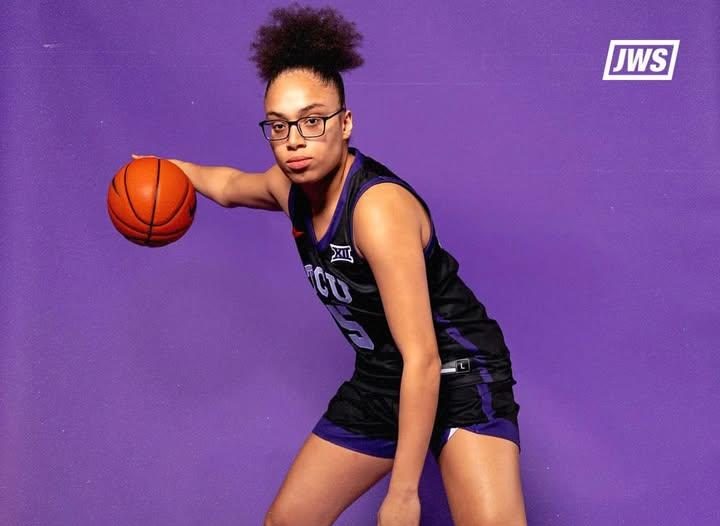
The double-edged new normal in college athletics today is the transfer portal and NIL (name, image and likeness). Since it was introduced in 2019, the number of men’s and women’s basketball players in the portal has increased each year from hundreds in 2019 to thousands in 2025. College football transfers also are up.

According to On3, which tracks portal comings and goings, over 40% of MBB players (5,607) and about 29% of WBB players (5,048) went into the 30-day portal window, which opened during March Madness and closed in late April.
In other words, the transfer portal along with NIL basically have become college sport’s free agency. Players come and go for various reasons and not always about playing time or lack thereof.
AD Advisors, a group of former college administrators, recently produced two “white papers” on the transfer portal by collecting quantitative data through interviews with coaches, administrators, athletic directors, and players for their first-hand experiences. The group also studied over 800 FBS (Football Bowl Subdivision) football players dating back to 2020-21 and over 14,000 basketball players in the portal dating back to 2019.
The respective studies found that “a significant majority” of football student-athletes and basketball players who entered the portal transferred down from a Power 5 school to a non-Power 5 school, or transferred down from other conferences or did not get picked by a new school.
Furthermore, both the portal and NIL are strange bedfellows of sorts, putting more pressure on coaches to succeed. An April 16 article in Minnesota Sports Fan pointed out that NIL ultimately did in former Minnesota coach Ben Johnson, who was fired in March after four seasons.

“When Ben was hired back in 2021,” the article said, “the wide-open NCAA transfer portal was still a very new thing. So was NIL. Every year under Johnson, they ran into the same problem — not enough NIL money. Instead of improving the core of their team in the offseason, Ben and his coaches had to find underdeveloped talent in the transfer portal and use it to cobble together an underwhelming roster.
“They’d lose their best players. This is why Ben Johnson was fired,” the article said.
Kennedy D. Wells, the CEO of Achieving Coaching Excellence, told the MSR that coaches must become equally as adept at transfer portal and NIL matters as they are with the X’s and O’s.
“Black coaches specifically, and it’s not to say that they’re not,” stressed Wells, “but they need to fully embrace and immerse themselves in what is transpiring with intercollegiate athletics.
“It is important that these coaches…understand that becoming a CEO is no longer an option. It is a must when it comes to how you go about navigating your specific program. It’s important that you be proactive about asking questions of the administrators and make sure that they have dotted all the I’s and crossed all the T’s to give you the best possible opportunity to be successful.”
The last-hired-first-fired axiom that has existed for Black coaches seemingly forever is putting Black coaches on hot seats quicker than usual. “The standard now is that you should be able to improve drastically from season to season,” said Wells.
“For those that know a little bit about the coaching profession, it’s very difficult to build chemistry and things like that, which are so vital to the success of any entity let alone a women’s or men’s basketball program.
“I think it’s not a matter of [Black coaches] having to work twice as hard to be half as good,” concluded Wells. “I think everybody’s working hard, especially in the college basketball landscape. Everybody’s working hard.”
Charles Hallman welcomes reader comments to challman@spokesman-recorder.com.
Your Might Also Like
-

 College Sports2 weeks ago
College Sports2 weeks agoPortal Update – Basketball and Gymnastics Take Hits
-

 Rec Sports2 weeks ago
Rec Sports2 weeks agoThe Program, a New Basketball Training Facility, Opening in Greenpoint This September
-

 NIL3 weeks ago
NIL3 weeks ago2025 NCAA Softball Tournament bracket, schedule revealed
-

 College Sports2 weeks ago
College Sports2 weeks agoPortal Update – Basketball and Gymnastics Take Hits
-
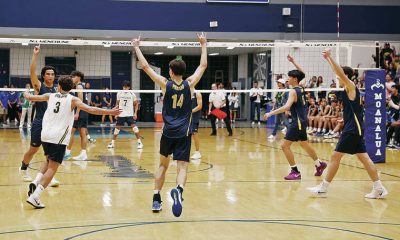
 Sports3 weeks ago
Sports3 weeks agoPunahou regains boys volleyball crown
-

 Motorsports3 weeks ago
Motorsports3 weeks agoEverything you need to know about Sunday’s NASCAR race in Kansas City
-

 Youtube3 weeks ago
Youtube3 weeks agoAaron Judge HAMMERS his 12th home run of the season!
-

 Youtube3 weeks ago
Youtube3 weeks agoDeion’s reaction to Travis Hunter being drafted
-
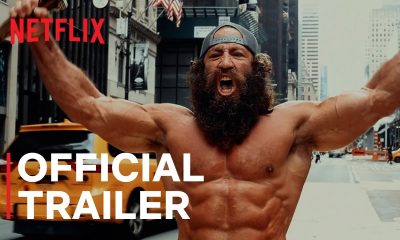
 Sports3 weeks ago
Sports3 weeks agoThis Netflix documentary about a controversial fitness guru makes Tiger King look tame
-

 Youtube3 weeks ago
Youtube3 weeks agoFACE OF THE LEAGUE CONTROVERSY
Stephen A. responds to LeBron’s NBA coverage criticism | First Take




































